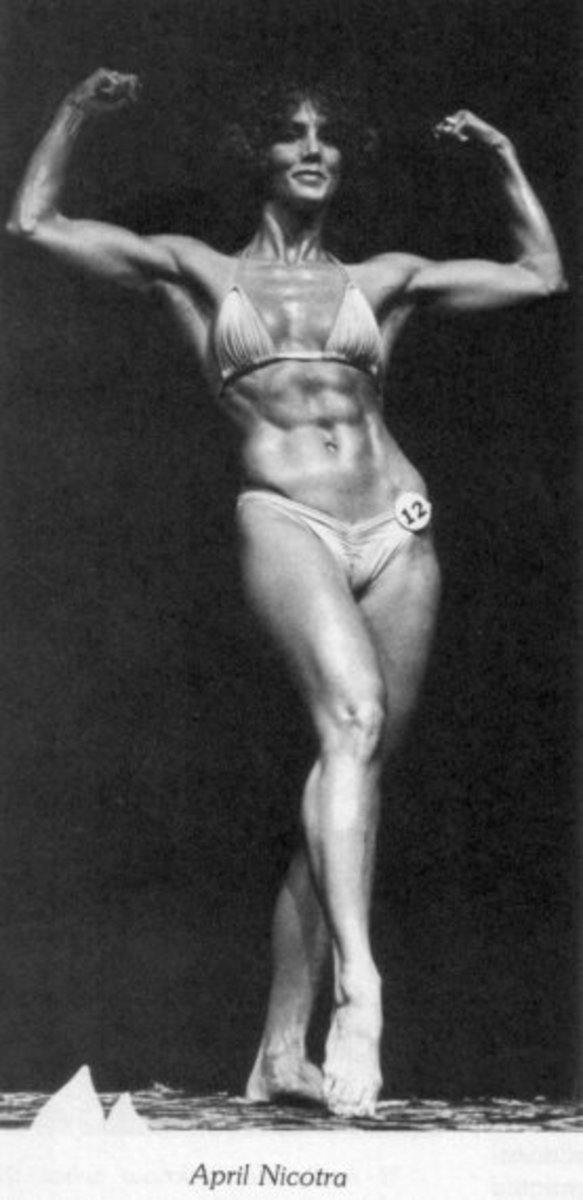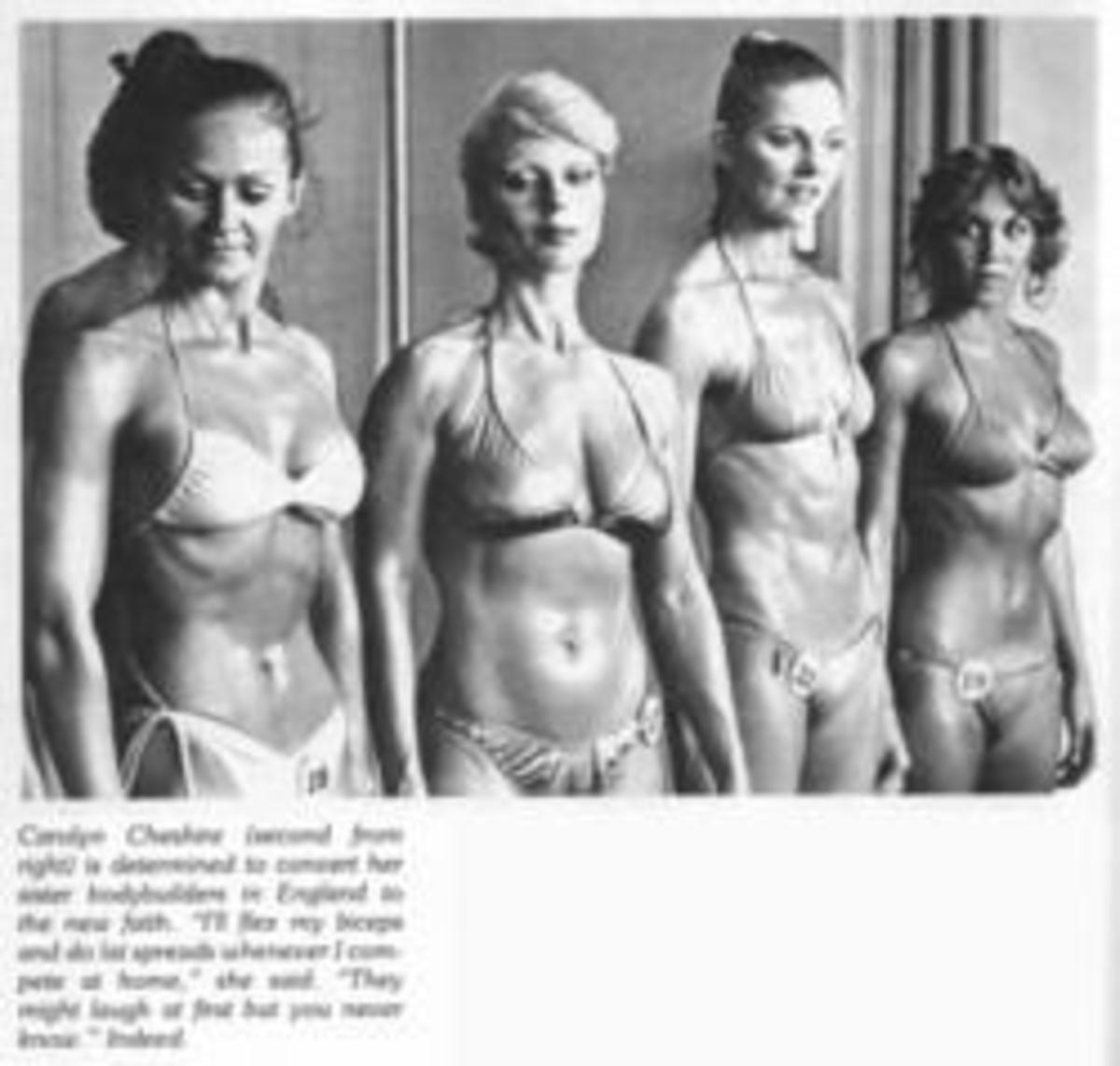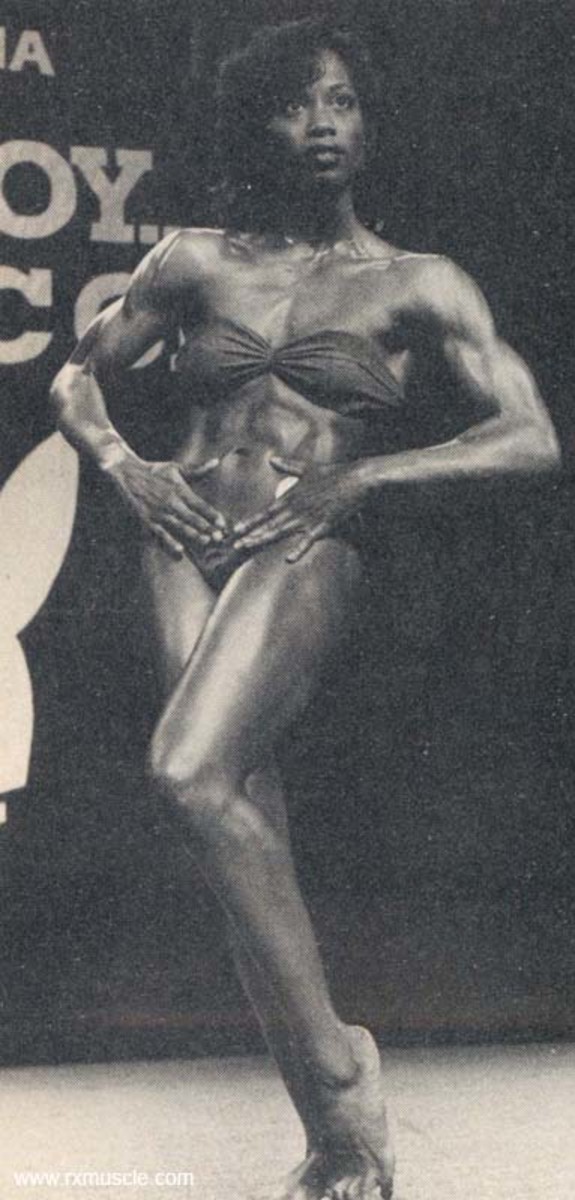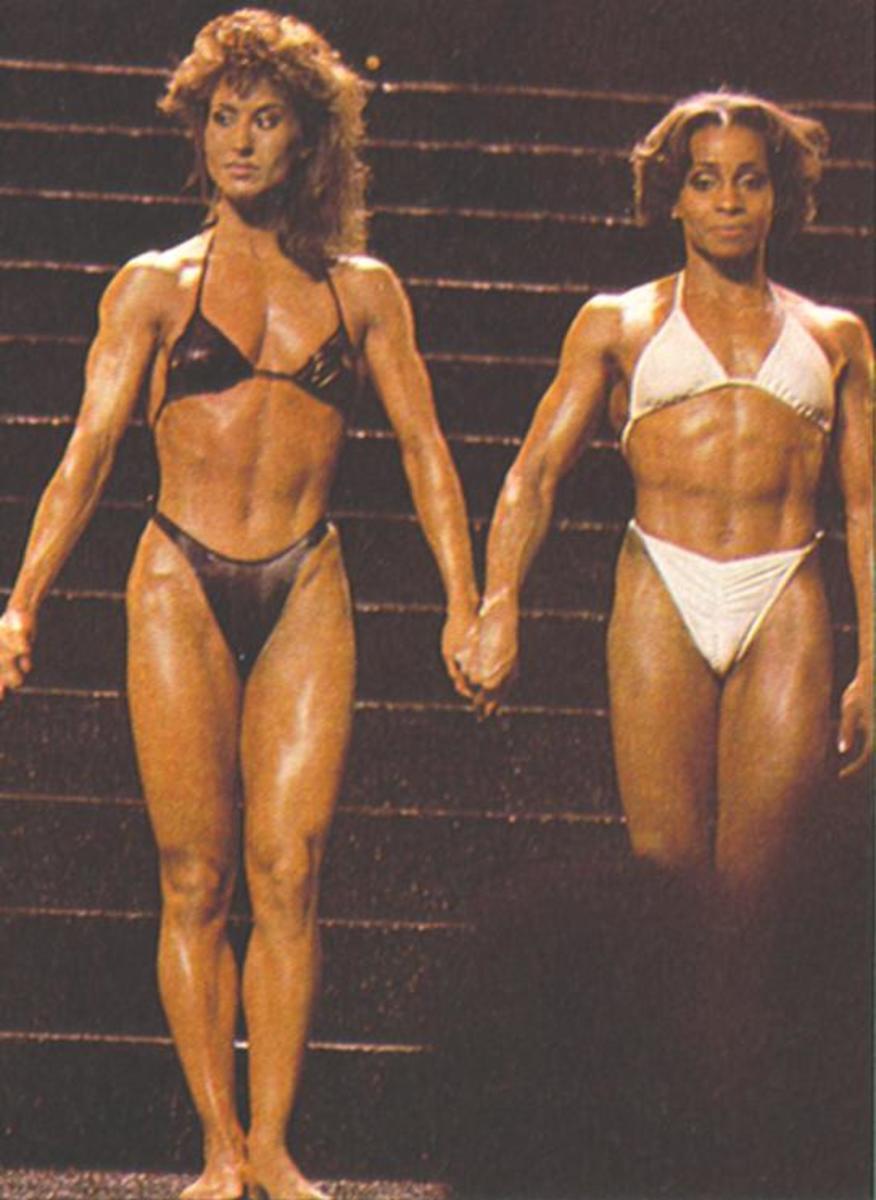“How To Meet, Date and Seduce Athletic Women” by Lori Victoria Braun
Purchase the Paperback Book on Amazon Now
Download the Kindle Version Now
Download the Audiobook(3 Hours 17 Minutes) on SendOwl Now
The Beginning of Women’s Bodybuilding
Peggy (Pudgy) Stockton was greatly promoted during the 1950s for the benefits of weight training for women. She graced the popular physique magazines of the time such as. Muscular Development, Iron Man, and Strength and Health.
Peggy became a popular attraction on the famous “muscle beach” scene where she gave exhibitions during intermissions of male bodybuilding contests, lifting heavy objects and doing double bicep poses or lat spreads in the same manner that male bodybuilders were well known for. She clearly worked out with weights and trained no differently than her male counterparts did, and therefore could be acknowledged as the first female to become famous as a body builder. Peggy was never a contender but rather, a pioneer.
It would not be until the late 70s before a muscular woman such as she would be seen again.
From Betty Weider to Rachel Mclish
The origins of female bodybuilding is not easy to pin down. It does seem that the only women one can find with barbells in hand prior to the 1950s were members of Barnum and Bailey’s circus and did not generally have a bodybuilder’s physique. There were some nutritionists in the first half of the 20th century who encouraged women to lift light weights in order to maintain a good female form and during the 1940s many movie stars were lifting light weights to maintain tone. Most women feared lifting moderate to heavy weights due to the belief that they would develop a masculine appearance.
There are ancient Edison films that present side show flickers of women comically lifting weights, donning 19th century strong man attire, but they obviously were simply large women who liked to eat a lot and found a way to earn some money. Most research points to Peggy ‘Pudgy” Stockton as the very first woman to show off muscles and be presented as a beach glamor girl at the same time in the 1950s. Peggy was never a side show attraction, but was presented with dignity and featured alongside Steve Reeves and other popular male body builders of the time as a healthy and fit woman who could be admired for her curvy form.
Another name in early women’s bodybuilding is Betty Brosmer, later to become Betty Weider after she married the bodybuilding guru, Joe Weider. Betty may have even helped encourage average women to use weights because she had the ideal female form. Her hip structure is natures perfection, with a nipped in waist and round hips, any extra muscle that Betty may have added to her extremely petite frame could not possibly make her look masculine. Women could look at Betty and say, “I would like to look like that.” These two ladies were the 50s bodybuilding bombshells. The 1950s was the decade that inspired female weightlifters to embrace their femininity and use weights to enhance their curves, but the trend seemed to cool down during the 1960s, and it was not until the 70s that women’s bodybuilding made a comeback when a former Mr. Universe named Reg Lewis presented an annual male bodybuilding affair that also included girls during the intermissions.
These women looked athletic and firm, but were in no way big or masculine as today’s female bodybuilders are. They were all drug free and it was taken into account that they were women, and an effort to look different than the typical male bodybuilders was the goal. To the modern eye they look like fit women with a generally good form, but would never be considered bodybuilders in modern times and the extreme look and drug use that is expected.
In Britain it was another story. The Miss Britain event presented seasoned female bodybuilders who trained at least three times per week, and watched their diets. Although these girls trained with weights and dieted they also maintained typical female attributes, but posed in the same manner as male body builders do, while in America the women were posing with open hands, rather than fists, and were not doing what is considered typically male poses, but more graceful and feminine silhouettes, while wearing high heels to enhance their femininity.
There were numerous contests in the 70s, but most of them were additions to male bodybuilding contests. They were gaining interest however, and by the late 70s there was becoming a clear distinction between a glamour girl contest and a physique contest. They decided to battle it out in 1979 in what was called Best in the Word, where all the women who had been competing in glamor and physique contests would have a show down.



Best in the World—Miss Olympia
The Best In the World contest of 1979 took place with a variety of champion female physique winners, strippers who had no idea what the contest was all about and a variety of women who appeared as though they had never picked up a barbell in their lives. Many of the contestants had no idea what the judges were looking for and just went on stage to be cute. April Nicotra, was perhaps the most widely respected of the contestants due to she having won several women’s physique contests since the early 70s. She was in no way bulky, had a smooth 20% fat layer to her body and graceful toned legs. Although she just looked like a very firm and trim women by today’s standards, she was usually one of the more muscular looking women in the contests she entered. April was aware that contestants were becoming more and more muscular and to prepare for Best in the World, she had worked out far differently than she had in the past. Judges were shocked at the definition and low body fat that she presented in 1979. Most of the male judges were disappointed to see her usually graceful poses morphed into he man style bicep poses that Arnold Schwarzenegger was famous for. She had also done away with her heels and hit the stage bare foot.
The contestants who resorted to jiggling, bumping and grinding were quickly eliminated and the most muscular remained to the end, with the champion being announced as Patsy Chapman, a beautiful and muscular woman with grace and charisma. Serious women’s bodybuilding was now on its way and the very next big female bodybuilders contest would be called Miss Olympia to represent the female counterpart of Mr. Olympia. All contestants understood what the requirements would be for the next big female show down.
The Miss Olympia contest would be just as a male bodybuilding contest. The basic same set of standard poses in which muscular development in each muscle group would be analyzed, and a set of free poses with routine would be performed during the show, and the women were barefoot.
It is not difficult to see why Rachel McLish easily won, and won again. She had beautiful muscular development and was a disciplined sportswoman. Her free routine was exotic, feminine and strong. She became the top female bodybuilder in the world, and is responsible for bringing weightlifting to the average woman as we know it today.
Somehow shortly after women’s bodybuilding gained some respect, it went in the exact same extreme direction that male bodybuilding was quickly going. The title of Miss was quickly changed to Ms. and it was decided that if a woman had too feminine a shape, due to bone structure, she was not bodybuilding material.
Steroids were used to achieve the massive gains that their male counterparts had, and the “difference” was no more. Female bodybuilding contests soon became nothing more than male bodybuilding contests with breast implants and a bikini top. This led to fitness contests sprouting up.
For a few years women who had a feminine, shapely, muscular body would compete in physique contests in which the winner was named Miss Fitness. It was a pageant/sports contest in which the women wore heels and evening gowns as well as a bikini. The fitness contests are still around but they have also evolved into a more masculine, male body builder appearance. Too bad they can’t leave well enough alone.
Women’s Bodybuilding Contests
Female bodybuilding contests still exist but it never reached mainstream popularity. The promise that it held in its infancy was one of proving the world the virtues of lifting weights and the female physique. Lifting weights gained popularity among women in the 1990s and it has gradually slipped away.
The modern women’s bodybuilding contests are largely responsible for turning people off of female bodybuilding. Women are afraid that they are going to turn into hideous monsters if they pump iron. The fear that the Weider brothers had back in the 70s and early 80s was that the sport would evolve into an extreme freak show that would give bodybuilding a bad name, and their earliest prediction has come true.
Hopefully a movement will eventually pick up where women’s bodybuilding left off in the 1970s, and lead women to a stronger, healthier, and more beautiful physique that pumping iron provides.



